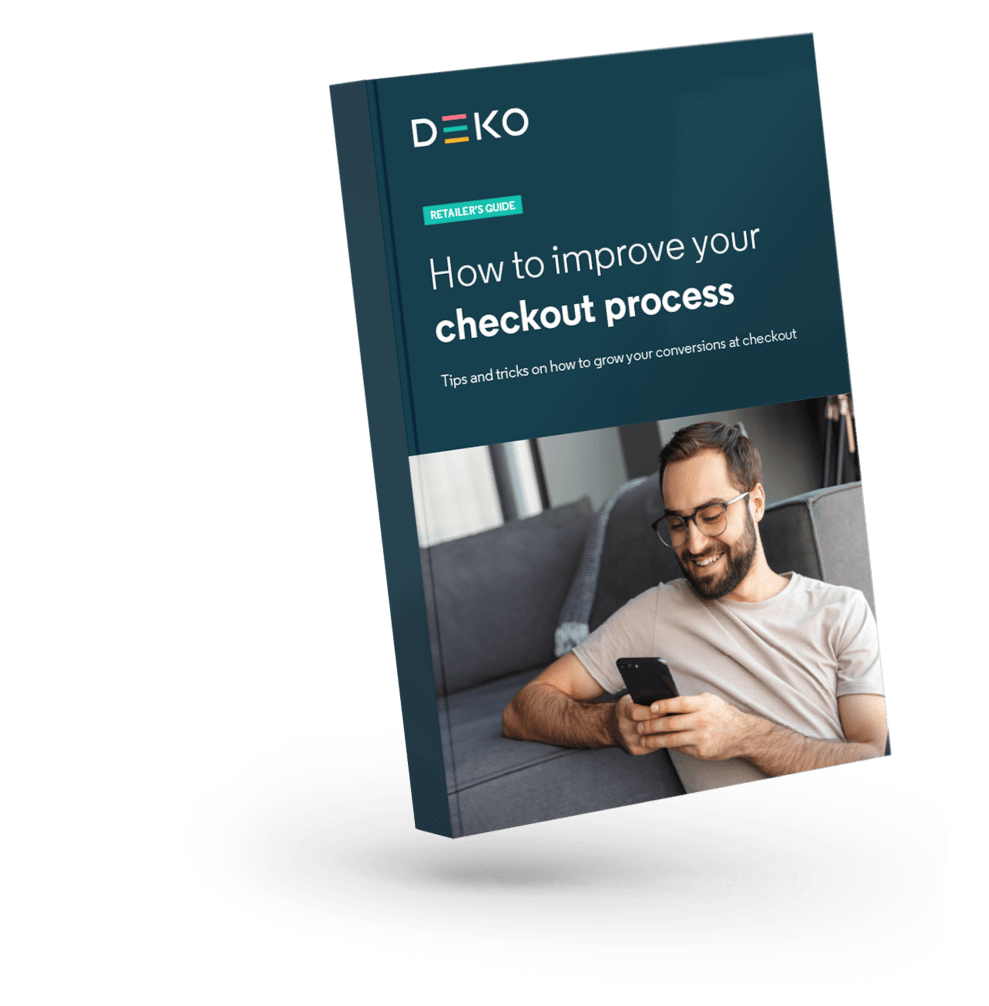Good marketing is the difference between a few sales and an identifiable brand people trust. When done to a high level, it generates leads, builds brand awareness and boosts revenue. Yet, for many online stores, creating a marketing strategy to drive the business forward can prove challenging. That's the purpose of this guide, which has everything you need to know about marketing for your retail store, from different methods to connecting with customers and using analytics for measured results.
Powerful marketing strategies for merchants
A strategy should be first on the list for any business planning a full-on marketing assault. It will add clarity and offer guidance on approaching specific aspects of your marketing. Online stores must build their brand so customers become familiar with their products and services. A watertight marketing strategy includes the 'how', 'why' and 'when'. A strategy should consist of social media outreach, search engine optimisation, video marketing, blog articles, email communications, podcasts, co-branding, earned media and PR. Creating a strategy brings everything together and provides focus.
Find out more about powerful marketing strategies for merchants
Why merchants need a tone of voice (TOV)
Many online stores don't consider one aspect of marketing: the tone of voice (TOV). It's how your brand sounds and communicates with audiences, from the wording on the website to emails and social media posts, as well as how employees talk to customers. It sets the tone for the look and feel of your company and should be in place before you start any other form of marketing. Without a tone of voice, it's hard to establish who you are and what you stand for. But once implemented, your company will sound more confident and have a clear voice when communicating internally and externally.
Find out more about why merchants need a tone of voice
Everything merchants need to know about content marketing
Content marketing is an essential component of a broader marketing strategy. It focuses on delivering value to customers through knowledgeable content. It also helps build a reputation for your brand, with customers seeing you as a trustworthy option. Content marketing involves:
- Writing blog articles
- Posting regularly on social media
- Sending newsletters via email
- Offering downloadable content in return for a customer's email address
- Video content.
You don't necessarily need to do all of these actions at once, but you should focus on at least a few of them to build your brand's trustworthiness and teach customers about your products and services while demonstrating knowledge of the industry.
Find out more about content marketing for merchants
How merchants can track the ROI on content marketing
While content marketing helps build trust and offers customers more insights, it's not always easy measuring results. For example, a blog article shouldn't exist solely to generate a sale, and social media is unlikely to result in new customers after a few posts. They serve the broader purpose of engaging customers. With that in mind, how do you ensure your content marketing efforts still produce measurable results?
- Start by setting goals and understanding what you want the content to achieve
- Be consistent with your output – content marketing is a long game and rarely generates instant results
- Use tools like Google Analytics to track the progress of your content and see how many people engage with it
- Identify achievable conversion metrics, such as subscriptions to a newsletter after someone has read the content
- Get feedback from the people who interact with your content. Social media is a great place to ask for insights from your audience.
Find out more about how to track ROI on your content marketing
What does good content look like for merchants?
Creating content might be necessary for your online store, but what does it look like in action? It's a question you must ask before writing blog articles, recording videos and posting on social media. Consider your audience's needs and answer questions about your business and the industry it operates in. Don't be afraid to explore different types of content to see what resonates the most with customers. It's also good to keep an eye on the market in your industry to stay on top of trends, and don't forget to be original and craft your take on topics.
Find out more about what good content looks like for merchants
How gated content can lead to more online sales
Gated content involves creating unique pieces of content, such as an ebook or white paper, and asking customers to sign up to read it. This usually consists in getting their email address so that you can send more marketing content and product offers. Unlike a paywall, gated content is free, even though they need to provide an email address or phone number. Gated content can increase conversions, provide more analytics about shopper behaviour and give you an email list for segmentation. The best types of gated content tend to come in the form of ebooks, infographics, case studies, videos and webinars.
Find out more about gated content
How to reduce marketing costs
Marketing is like a tap that you can't turn off. It needs to be an ongoing process, helping to build the brand profile of your online store. But that doesn't mean you can't be more cost-efficient with specific types of marketing. To save marketing costs, think about focusing on thought leadership content rather than paying for direct advertising. Or revisit older content and see how you can improve it. Other aspects include taking a data-focused approach to make better decisions around marketing spend, as well as creating customer personas to ensure you're marketing to the right people and maximising ROI.
FInd out more about how to reduce marketing costs
What merchants need to know about pay-per-click (PPC)
Pay per click (PPC) is a smart way to gain traction online and appear at the top of search engines. Good PPC content can increase website traffic and boost sales for your online store. Different types of PPC campaigns are available to merchants, including Google Ads, Bing Ads and social media ads. PPC is a clever way to get more website visibility, especially if you haven't yet built a robust organic strategy. On average, you should expect to pay between one and two pounds every time someone interacts with your PPC advert.
Find out more about pay-per-click for your online store
How Google Featured Snippets can help merchants
When you search Google, a small box appears at the top of the screen displaying text. This is a Google Featured Snippet, and it’s a selected search result revealing a condensed version of the answer to your query. Google Featured Snippets tend to get more clicks than other search results on Google. Even better, they’re completely organic – you don’t have to pay to appear in Google Featured Snippets. While it’s not easy to feature, there’s no reason why your online store can’t create a piece of content that Google deems Featured Snippet worthy. Think about what your audience wants and craft content featuring in-depth answers to their biggest needs.
Find out more about how to appear on Google Featured Snippets
How to succeed with organic and paid traffic
You'll need a robust organic and paid traffic strategy to succeed at online marketing. Organic traffic is when you appear on search engines without any advertising spend, while paid search sees you paying for the privilege of featuring near the top of a search engine. Both have advantages, so you need to focus on creating content for organic search with a longer lifespan and short-term content designed to succeed as a paid campaign.
Find out more about how to succeed with organic and paid traffic
How Google Analytics and Ads can help merchants
Google Analytics offers plenty of key insights into how your website content performs. You can use it to track the number of people who visit your site, the pages they interact with most and where you can make improvements. Use it to see page views, website entrances (where users come from), bounce rates (how many people leave after visiting just one page) and the length of sessions they spend on your site. Then take those insights to create solutions for a more enjoyable shopping experience for customers. Details provided by Google Analytics can also inform you on the content you should make for paid ads on Google Ads.
Find out more about Google Analytics and Google Ads
Social media marketing tips for merchants
Social media is one of the best platforms you can use to attract more shoppers. No other platform gives you the same kind of reach as social media, where you can easily build your brand and engage with customers directly. Research your audience, so you're targeting the right people, keep up with trends and use social media tools for better insights into how to enjoy success on different platforms. You should also post regularly to build an audience and ask their opinion to engage and make them feel included.
Find out more about social media marketing for merchants
How to avoid mistakes when looking for shoppers on social media
While there are many actions you can take on social media, there are some elements you shouldn't do while trying to build a brand and sell more items. For starters, don't jump in head first. Instead, spend some time learning how it works and how people use different social media networks. Make social media outreach part of your marketing strategy, so a plan of action is in place that tracks results to see what works and doesn't. Try not to focus on too many social media platforms at once – instead, aim to build a following on one or two. And most importantly, engage with your audience. Too many businesses open an account but don't talk to their followers. This is the biggest social media no-no.
Find out more about avoiding mistakes on social media
What merchants need to know about influencer marketing
Influencers are one of the newer marketing trends. Working with an influencer can give your brand more exposure while building audience trust. You can foster important relationships, improve brand awareness, add extra elements to your content and boost SEO by working with an influencer. But first, you need to find the right one to work with and ensure they are a good fit for your brand. Try using hashtags, social media monitoring and specialist websites designed to find the right people before reaching out and working with an influencer.
Find out more about what merchants need to know for influencer marketing
Best marketing tools for merchants
Using marketing tools is an efficient way to help your efforts, especially as many options come with in-depth features. Marketers agree that having the right tools can significantly impact your outreach, whether focusing on email communications or writing a blog article. Some of the most popular marketing tools include:
- MailChimp – an email marketing platform
- SEMRush – helps marketers find keywords
- HubSpot – a one-stop shop for all your marketing needs
- Trello – task management tool
- Sprout Social – social media management
- Unbounce – landing page tool
- Google Suite – a collection of cloud computing tools
Find out more about the best marketing tools
Final thoughts
Sometimes knowing where to start with marketing can be overwhelming. But the minute you put a strategy in place, your online store can begin trying different types of marketing to build the business and attract more customers. From paid campaigns to organic reach and social media posting to content marketing, there are many assets available to help your online store build its profile and excel with its marketing.






